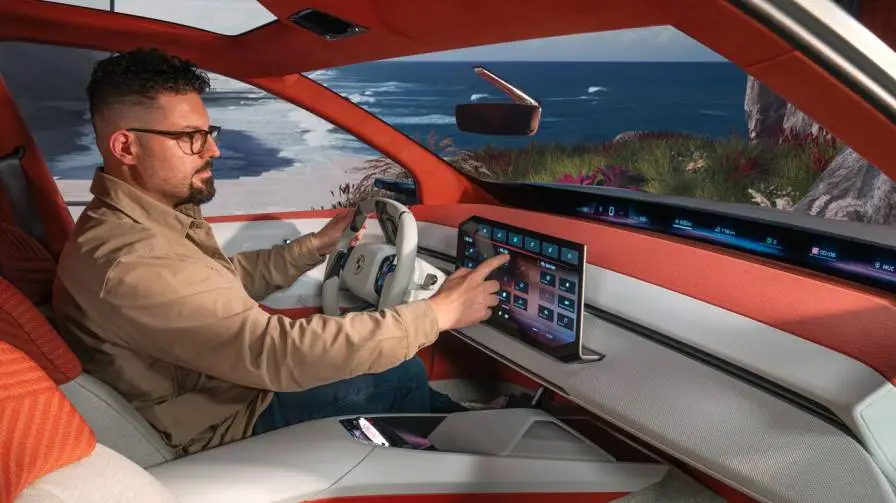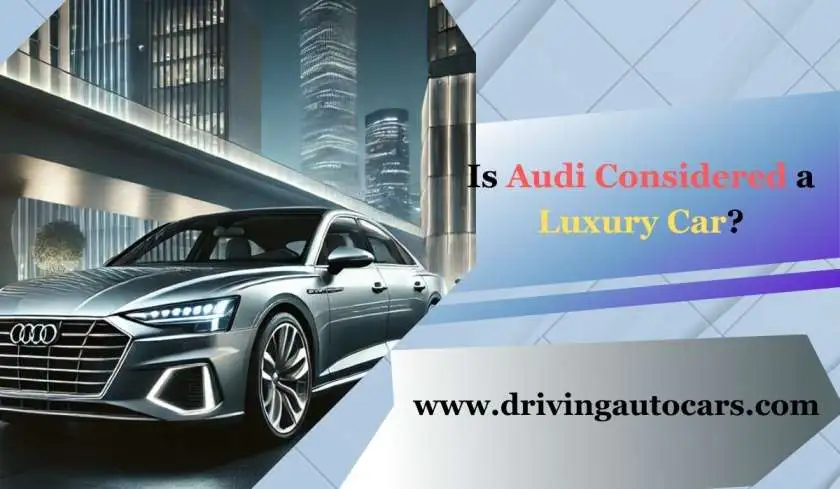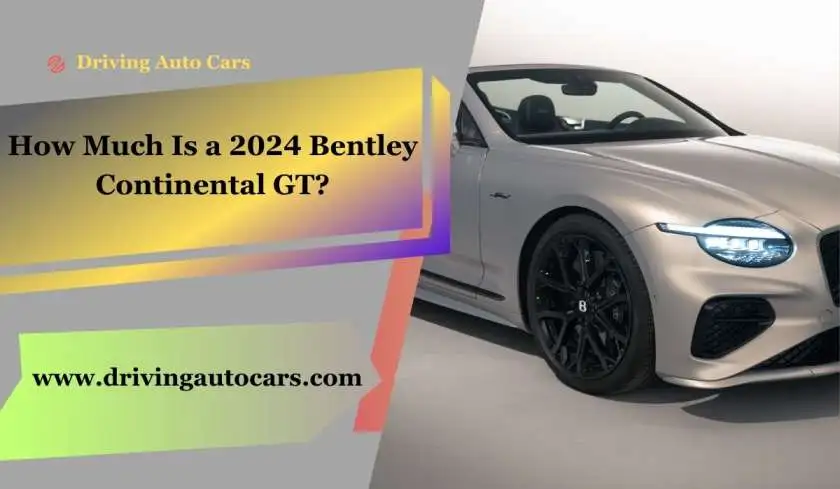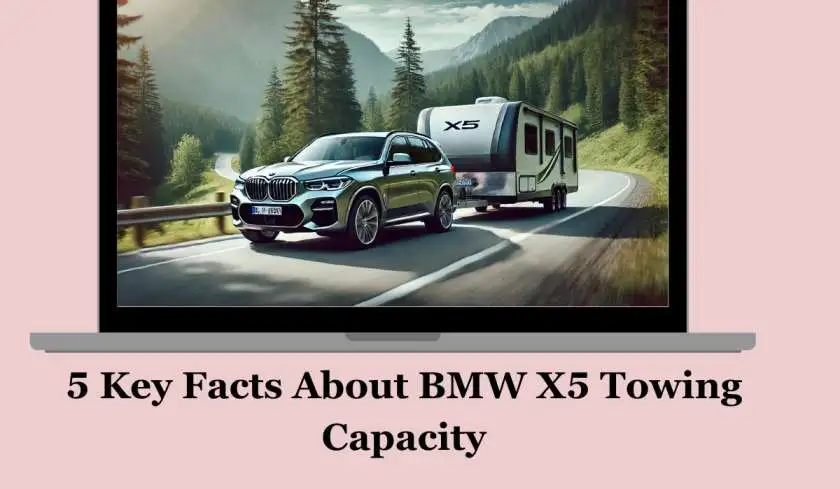BMW E39 5-Series Buyers Guide – E39 Performance, Handling, and Reliability
In 1995, BMW was facing some tough competition. Mercedes were cooking up the next E-Class which would release in 1996, with all of the luxury and technical prowess that the world had come to expect from BMW’s Stuttgart-based neighbors. Audi was putting out some winners too. The 1995 Audi A6 might not have been worldly-wise to compete in the creature comforts department, but it did come with Quattro four-wheel-drive making it arguably the most versatile.
The previous generation E34 5-Series kind of composite into the scenery as far as late-80s early-90s midsize German sedans go. While the E34 5-Series wasn’t a bad car by any means, it was an white-haired diamond with white-haired technology by 1995. As a result, BMW knew it was time for a refresh.
Enter the BMW E39 5-Series. Often cited as one of the weightier BMW chassis of all time, the E39 put BMW firmly at the top of the pile in the luxury sedan race during the late 1990s and early 2000s. What set the E39 5-Series untied from its competition was its driving dynamics. It felt like a sporty car, which couldn’t really be said for the Mercedes W210 or Audi A6.
Over its 9-year run between 1995 and 2004, the E39 5-Series was offered in two variegated soul styles and with four variegated engine options. The E39’s timeless looks, undeniable performance, and impressive reliability make it one of the most prestigious BMW models of all time. In this guide, we’ll take a squint at the BMW E39 in detail to help inform you on which model to buy.

Major Differences Between E34 5-Series and E39 5-Series
In order to alimony up with the stiff competition coming out of Germany and Japan (keep in mind that the Lexus LS400 was still dominating the luxury market at the time), BMW needed to take a serious squint at the E34 5-Series layout and icon out how to make it substantially better. The good news is that they definitely succeeded.
As to be expected, the E39 5-Series was a major technical step forward for the 5-Series. Due to the fact that the E34 was released in the mid-1980s, the interior, safety equipment, styling, and driving dynamics were thoroughly unstylish by the early 2000s. The E39 improved on the previous generation in all of those departments.
E39 5-Series Diamond and Chassis Changes
Designed by famed BMW designer Joji Nagashima, moreover known for designing the E90 3-Series and BMW Z3, the E39 5-Series is truly a timeless beauty. The E39’s proportionate and elegant soul is fantastic to squint at, plane today. While its diamond might not tousle in with modern luxury sedans, the E39’s understated sophistication will never go out of style.
Apart from the E39’s archetype design, some significant changes were moreover made to the chassis itself. For one, the E39 is marginally worthier than the E34 5-Series. In comparison, the E39 has a 2.7” longer wheelbase and is 2.2” longer than the E34 5-Series in total. The E39 touring is plane longer, measuring 3.3” longer than the outgoing E34. The E39 is significantly heavier than the E34 due to the spare technology and equipment. Overall, the E39 weighs, on average, virtually 1,500 lbs increasingly than the previous generation 5-Series. While that seems like a lot of weight, the increased chassis rigidity and updated steering recoup a bit for the widow fat.
In fact, improved chassis dynamics was one of BMW’s main priorities with the E39. Compared to the BMW E34, the BMW E39 5-Series is 40 percent increasingly structurally rigid, not only reducing soul flex, but moreover improving ride quality and suspension accuracy.
E39 5-Series Steering and Suspension Changes
Two of the most significant upgrades that came with the introduction of the BMW E39 5-Series were the transpiration from recirculating wittiness steering to rack and pinion steering and the introduction of aluminum Z-link suspension in the rear. When it comes to handling, steering and suspension are at the forefront of importance.
One of the biggest differences between the BMW E34 and the BMW E39 is the steering feel. It is often cited in the forums as a main point that can make or unravel one 5-Series model over the other. While rack and pinion steering is unquestionably less complicated, increasingly compact, and arguably increasingly responsive, some people prefer the steering finger associated with the older recirculating ball-style steering box. This really boils lanugo to personal preference, but the BMW E39’s steering certainly feels increasingly responsive and has less resistance.
The BMW E39 5-Series is the first 5-Series to full-length primarily aluminum front suspension components. This helped to reduce unsprung weight, which is essential for largest handling performance. Overall, 46 lbs were saved from using aluminum strut tubes, steering knuckles, spring pads, and subframe. Additionally, the E39 switched from rear semi-trailing arm suspension to a Z-link four-link diamond which increases overall cornering stability.
E39 5-Series Safety Changes
While the other changes that we have listed surpassing this section are important and very noticeable between the two 5-Series generations, perhaps the most important changes came in the form of safety enhancements. While the previous E34 5-Series released on strong build materials and chassis strength to provide safety to its passengers, the E39 introduced major safety-improving features to the BMW 5-Series and to cars as a whole.
The BMW E39 is one of the first cars to full-length curtain airbags located in the A-pilar to protect the occupants’ heads in the event of a side collision. This full-length would later wilt a pillar of automotive safety in the decade to come. The E39 contained plane increasingly airbags, with dual front and side airbags, as well as a steering wheel airbag. The 5-Series moreover came standard with front seatbelts equipped with pre-tensioners and load limiters, remoter protecting the front passengers. These features, combined with the spare chassis stiffness, earned the E39 5-Series a 4-out-of-five star safety rating from the Euro NCAP.
E39 Model Info
Again, we're primarily focusing on the US models. However, we'll provide a quick dispersal of some useful information for the BMW E39 chassis. It's misogynist in the pursuit soul styles:
- E39 - 4-Door Sedan
- E39 - 4-Door Touring Wagon
US models only include the BMW E39 528i, 530i, 540i, and M5. While we were somewhat limited in the models that we got stateside, there were quite a few variants that the rest of the world received. Not only did the rest of the world get multiple other petrol variants, they moreover received a good number of diesel E39 variants as well. BMW E39 5-Series models include:
- E39 520i / 520d
- E39 523i
- E39 525i / 525d / 525td / 525tds
- E39 530i / 530d
- E39 535i
- E39 540i
- E39 M5
In the US, the E39 5 Series was first offered in 528i and 540i trims in 1997 and 1998. The E39 M5 and E39 touring wagon were offered a year later in 1999. When the E39 facelift happened in 2001, the models moreover reverted for the US market. Instead of 528i badging, the wiring model E39 in the United States was reverted to the E39 525i. The 525i moreover received the 2.5L M54 straight-6 as opposed to the 528i’s 2.8L M52 BMW straight-6. The E39 530i was moreover introduced for the 2001 model year. The 530i moreover got the M54 straight-6 engine, but with a ostracism of 3.0L.
1995-2004 BMW 5-Series Engines
A wide variety of engines are misogynist for the BMW 5-Series. A lot of this E39 buyers guide and comparison comes lanugo to these engines. Foreign models include many options, such as the BMW M47, BMW M57, and BMW M51 diesel engines. There were moreover options for the M52, M54, and M62. The latter 3 will be our focal point as they're the options misogynist in US model 5-series cars.
- BMW M52 - 2.0L / 2.5L / 2.8L inline-6 naturally aspirated
- BMW M54 - 2.2 L / 2.5L / 3.0L inline-6 naturally aspirated
- BMW M62 - 3.5L / 4.4L inline-6 naturally aspirated
As we move through the 5-series buyers guide we'll unravel lanugo the engines further. For now, let's quickly discuss each of the 2.0L-4.4L liter BMW inline-6 engines found in the E39 sedan and E39 wagon.
BMW M52 Engine
The BMW M52 engine is the 6-cylinder that immediately succeeded the BMW M50 inline-6 that was found in the BMW E34 and BMW E36. Over the undertow of the E39’s build cycle, the M52 engine was used in three variegated E39 models, including the E39 520i, E39 523i, and 528i. It moreover came in three variegated displacements, including 2.0L, 2.5L, and 2.8L.
In order, the M52 variants used in the E39 include the M52B20, M52B25, and M52B28. In wing to the wiring engine models, each of the variants moreover received an updated version in 1998 to introduce new upgrades to the M52 platform. These updated variants were given the “technical update” title, designated by a “TU” in the middle of the engine codes (i.e. M52TUB25).
The characteristics of the M52 really slaver the essence of BMW’s straight-6 formula. It really is an engine that proves that you don’t need forced induction or a double-digit cylinder count to make zaftig power that is smooth and reliable. In terms of how a stock M52 performs, its power wordage can be described in a single word: linear. While prior non-VANOS M50 engines delivered power plane increasingly linearly, the upper RPM performance of the M52 is favorable to many.
BMW M54 Engine
The M54 engine was the successor to the M52 straight-6 engine that was introduced in the E36 3-Series. The M54 featured an aluminum woodcut and cylinder throne in the US compared to the US-spec iron woodcut M52. Additionally, the M54 received double VANOS on both the intake and frazzle sides of the engine. Like the M52, the M54 came in multiple variegated displacements ranging from 2.2L to 3.0L. The M54 engine codes include the M54B22, M54B25, and M54B30.
Compared to the M52, the M54 is a increasingly sophisticated and refined engine. Due to its inclusion of double-VANOS, the M54 moreover delivers power linearly, but there is an widow bit of power near the top of the rev range. Unlike its predecessor, the BMW M52, the BMW M54 engine did not receive a technical update over the undertow of its build cycle.
Of all of the engines placed in the E39 chassis, the M54B30 is the most prestigious of them all. The BMW E39 530i was rated as Ward’s Weightier Engine in both 2002 and 2003. In wing to stuff a remarkably strong and reliable engine, the M54 is moreover pretty modifiable.
BMW M54 Bolt-On Performance Mods
Most Worldwide BMW M54 Engine Problems
BMW M62 Engine
V8 engines have been an important part of BMW’s engine legacy for quite a while now. The M60 V8 was the first BMW V8 engine used in the E34 5-Series. As a refreshed and reworked version of the older M60 V8 which was in production from 1992 to 1996, the M62 engine made some notable changes to the older engine’s diamond which improved reliability and performance. Innovative changes to the engine block’s construction, hypereutectic pistons, and ferrous-coated side skirts make the M62 a sturdy engine and a favorite in the BMW community.
Like the engines that we’ve once discussed, the M62 V8 was moreover offered in two variegated displacements in the E39 chassis. There was a 3.5L V8 variant, with the engine lawmaking M62B35, and a 4.4L variant, with the M62B44 engine code. In the US, we only received the BMW 540i which came with the M62B44. The M62 V8 received a technical update in 1998.
The post-1998 M62s have slightly variegated power and torque curves due to the presence of single-VANOS. This unliable the M62 to have a much flatter torque lines with much increasingly misogynist lanugo low compared to the M60 and pre-update M62s. As well as the wing of VANOS, the update to fully-electronic throttle tenancy made a significant difference to the velocity characteristics of the updated M62 in variegated driving modes.
Most Worldwide BMW M62 Engine Problems
BMW E39 5-Series Price
Since this is a buyer's guide we're focusing on current prices as of 2022 and ignoring any MSRP. When it comes to current E39 prices, now might be one of the weightier times to find a good example of one. Since the E39 is hovering virtually 20 years old at this point, most models have hit a low point in their depreciation curve. With that stuff said, there is a new wave of archetype BMW enthusiasts driving up the prices of good chassis. This has caused the prices of E30s and E36s to skyrocket, and the same is unseat to happen with the E46 and E39 in the near future.

BMW E39 525i Pricing - $3,500-$5,000
In the United States, E39 525i models are the easiest to find and are the least expensive model to purchase. Due to the fact that they are somewhat underpowered due to their M54B25 powerplants, the 525i isn’t as in-demand as the increasingly powerful models. With that stuff said, if you are looking for a well-turned BMW chassis for a reasonable price, you can find a good example of an E39 525i for virtually $5,000 at this point.
BMW E39 528i Pricing - $2,500-$4,500
Stepping up a level, it is still possible to find E39 528i and E39 530is for a reasonable price as well. Early model E39 528i (between 1995 and 1998) might unquestionably be the least expensive E39 model to purchase due to the fact that they have the older 2.8L single-VANOS M52 engine and unrefreshed soul styling. While late-model 528i E39s (from 1998 to 2001) still utilize the 2.8L M52, the enhanced soul philosophy and other late-model E39 features might tumor the price up a bit over the early models.
BMW E39 530i Pricing - $5,000-$9,000
Due to the fact that the BMW E39 530i is the least worldwide E39 variant while moreover stuff one of the most sought after, they often fetch a pearly value increasingly than the other 6-cylinder models unelevated it. As we stated earlier, the 3.0L M54 straight-6 won Ward’s Engine of the Year in both 2002 and 2003. Since the M54 is often increasingly reliable and cheaper to repair than the M62 V8 in the BMW 540i, the E39 530i has maintained its value scrutinizingly as well as the increasingly powerful BMW E39 540i.
In terms of pricing, you can often find a decent example of an E39 530i for virtually $5,000-$9,000. E39 530is with a transmission transmission are plane increasingly sought after, with 5-speeds going for closer to the top of that price range.
BMW E39 540i Pricing - $6,000-$12,000
As the top E39 model surpassing the E39 M5, the E39 540i is not only the most powerful model in the regular lineup, but it is moreover the most sought-after. While will-less E39 540is fetch a decent value on the second hand market, the manual-equipped 540is are truly valuable. E39 540i moreover tend to be the best-equipped models due to its upper original MSRP. Overall, the M62 is a unconfined engine with a lot of grunt. Having owned an E39 540i, I can truly vouch for that statement.
Automatic E39 540is typically go for virtually $6,000 while equivalent manual-equipped 540i can go for virtually double that. The true unicorn is the E39 540i M-Sport 6-Speed, of which there are only 1,190 overly produced. Those can sell for well into the $20,000s.
BMW E39 Performance
We have a handling section coming up next, so this portion is mostly regarding engines and straight-line performance. We'll be fairly quick moving through this topic since we gave a unenduring overview earlier. Long story short, if you're in the market for the ultimate performance E39 then you'll want to consider the M54B30 and M62-powered E39 530i and E39 540i. While the 530i isn’t necessarily fast in a traditional sense, it has no problem getting going under its own weight. The 540i, on the other hand, is a truly capable model that delivers very impressive straight-line performance.
Top that off with the fact the M54 and M62 are easy to modify for increasingly power. Simple bolt-ons can hands push these engines, specifically the M62, to 300 horsepower. Due to the fact that both engines are naturally aspirated and are both pretty efficient from the factory, it does take a decent value of money and effort to truly transform the performance of either the M54 or the M62. However, if you are sufferer set on pushing bog horsepower numbers from either engine, it is certainly possible.
Anyways, we could sit here and list off 0-60 and 1/4 mile times. However, all of those numbers vary based on drivers, conditions, transmission, etc. Point is - if you want performance then the M54 or M62-powered 530i and 540i are the way to go.
E39 525i, 530i, 540i Handling
Handling is one of the most important characteristics of any car and a defining trait for BMW as a whole. It must be said that the BMW E39 is a very well-handling sedan. With that stuff said, the E39 is a large vehicle and still feels like one. In comparison to a smaller car like the E46 3-Series, the E39 has noticeably increasingly soul roll and less chassis stiffness. That doesn’t make it a bad car to drive, though. Quite the opposite actually. Many people prefer the slightly less precise handling characteristics of the E39 due to the fact that it has increasingly weft and is a bit increasingly animated.
Compared to the E34 5-Series that preceded it, the E39 is far increasingly proficient in the handling department. As we stated earlier, the E39 is one of the first BMWs to utilize primarily aluminum front suspension components which reduced unsprung weight by a significant degree. The rear four-link suspension moreover provides the E39 chassis with a bit increasingly cornering stability, making it extremely well-turned at upper speeds.
Typically, the 6-cylinder E39 variants are the better-handling models in the E39 lineup. A lot of that boils lanugo to the fact that the 6-cylinder-equipped E39s have a largest weight distribution, as the V8 engines, like the M62 and S62, weigh a significant value increasingly than the M52 and M54. While the straight-6 E39s have a perfect 50/50 weight distribution (a signature BMW attribute), the V8 models are slightly front-biased.
The E39 is no slouch when it comes to handling and agility. With that stuff said, the E39 5-Series can be made to handle significantly largest with a few vital modifications like coilover suspension and lighter wheels.
BMW E92 Reliability & Problems
Again, we'll be quick since we touched on this earlier. The previous links to our engine problems guides are helpful resources for specific issues with each engine. One goody to scrutinizingly BMW models from the early 2000s is their simplicity. While many oppose that the E46 and E39 are the first BMW models to integrate technology into the driving wits heavily, the E39 is still a rudimentary car by today’s standards.
With the introduction of so many electrical components, some are unseat to fail, expressly at this point, over 20 years vastitude the E39’s release. Some of the most worldwide electrical gremlins include non-functional window regulators, sufferer pixels on the inside display, and lightweight buttons. While the E39 might be problematic in the electrical department, you’d be hard-pressed to find a car as old without electrical issues.
For the most part, the 6-cylinder engines offered in the E39 5-Series are all pretty resilient engines, as long as they have been properly maintained. Although the M52 and M54 are widely considered reliable, they share a few worldwide issues. Once M52 and M54 engines get to upper mileage, VANOS seals are known to wear and need replacement. Lightweight DISA valves are moreover worldwide on both the M52TU and M54 engines, resulting in reduced power and a squealing sound from the engine bay. The M62 V8 engine has its own pearly share of issues too. The valley pan gasket on the M62 is known to leak, requiring a replacement.
Otherwise, these engines share many similar reliability concerns. Things like VANOS solenoids, valve imbricate gaskets, oil pan gaskets, water pumps, coolant hoses, expansion tanks, etc are all pretty worldwide problems. Expressly with the age of the BMW E39 5-series all of these engines are likely to need a little work from time to time. Most repairs aren't too expensive for the DIY crowd, but financing add up quickly if you go to a repair shop or dealer for everything.
E39 Buyers Guide Summary
The BMW E39 5-Series ushered in a new era for German midsize sedans and proved that it is possible for a car to be both luxurious and performance-oriented. The E39 was a major leap from the E34 5-Series in terms of safety, performance, and technology. While we missed out on a few models and engines in the United States, the E39 525i, E39 528i, E39 530i, and E39 540i are all very capable cars that can still be purchased for a reasonable price.
What's your wits with the BMW E39 5-Series? Are you considering one?
Leave a scuttlebutt & let us know!
Looking for other BMW buyers guides? Check out our E90 3-series buyers guide










